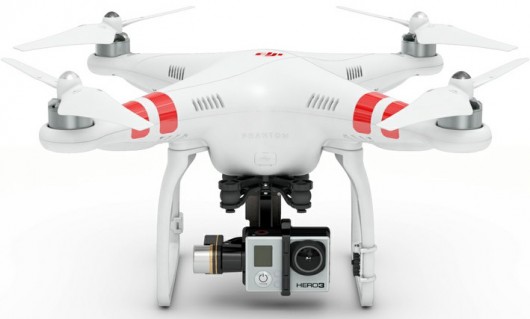By site editor Dan Chung:

DJI are releasing a mandatory firmware upgrade that will prevent users from flying their Phantom series quadcopters in a 15.5 mile radius area of downtown Washington DC, they have announced today. Coming two days after a DJI drone crashed into a tree on the White House lawn, the move is likely designed to allay the fears of regulators.
DJI were already planning to implement a wider no fly zone policy increasing on the current version that prevents flight around US airports. This will cover other areas where flight is restricted by local authorities. In China a similar restriction in DJI’s drones prevents flight in the centre of Beijing around sensitive government buildings and national landmarks.
How these restrictions will be dealt with in other DJI multirotors designed for professional operators is unclear at this stage. The larger Spreadwings series and Inspire 1 are not mentioned in DJI’s press release – maybe because professional operators are deemed more likely to comply with rules and regulations. (EDIT – I’ve just spoken to DJI who told me that the Inspire 1 and Spreadwings series are currently not flight restricted in the same way but this may change in the future).
Here is the full statement from DJI:
Hong Kong, (28 January 2015) – DJI will release a mandatory firmware update for the Phantom 2, Phantom 2 Vision, and Phantom 2 Vision+ to help users comply with the FAA’s Notice to Airmen (NOTAM) 0/8326, which restricts unmanned flight around the Washington, DC metropolitan area.
The updated firmware (V3.10) will be released in coming days and adds a No-Fly Zone centered on downtown Washington, DC and extends for a 25 kilometer (15.5 mile) radius in all directions. Phantom pilots in this area will not be able to take off from or fly into this airspace.
The restriction is part of a planned extension of DJI’s No Fly Zone system that prohibits flight near airports and other locations where flight is restricted by local authorities. These extended no fly zones will include over 10,000 airports registered with the International Air Transport Association (IATA) and will expand no fly zones to ensure they cover the runways at major international airports.
DJI is also continuing to update its no fly zone list in compliance with local regulations to include additional sensitive locations and to prevent flight across national borders.
These new safety features will be released across DJI’s flying platforms in the near future.
“With the unmanned aerial systems community growing on a daily basis, we feel it is important to provide pilots additional tools to help them fly safely and responsibly,” said Michael Perry, DJI’s company spokesperson. “We will continue cooperating with regulators and lawmakers to ensure the skies stay safe and open for innovation.”





